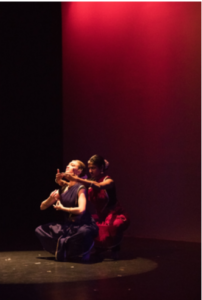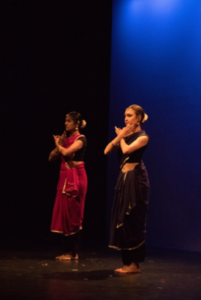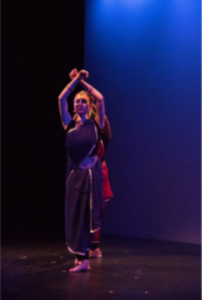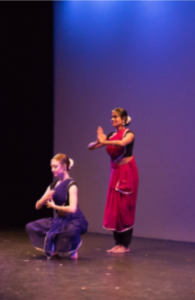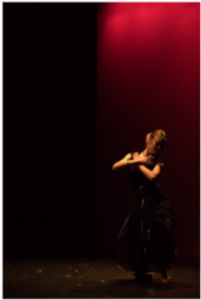Communication is often noted as the connecting thread between multiple factors in the intensive care unit (ICU) environment, especially when the patient is unable to voice decisions. High-quality communication about goals of care and implementation of interventions versus palliative options has been shown to decrease family depression, improve adherence to MOLST forms by patients who become nonverbal, and decrease clinician burnout. Several models of communication have been implemented, focusing on semantics, environments, impacts on stress, patient and surrogate comprehension, and physician burnout.
While these methods suggest options for improved understanding between the physician-surrogate-patient complex in the ICU, they do not explore the emotional aspects of nonverbal communication. Non-verbal communication is a rarely studied form of discourse in the ICU and is under-emphasized in physician training. Studies have shown, via kinesics workshops, role-playing activities, and cultural communication lectures, that non-verbal communication impacts perceptions of empathy, competence, and emotional distress amongst physicians and patients in ICU settings. Exploring ways to teach nonverbal communication in medical training can prove to be beneficial to physicians in the ICU. One way to teach non-verbal, body-based communication is through the language of the body itself — dance.
Kuchipudi and Bharatanatyam, two forms of Indian classical dance, use bodily movement, hand gestures, and facial expressions to tell stories. Stories have long been tools to reflect on human emotions and, in dance, offer a direct re-enactment of non-verbal cues. In this piece called “Chinnamasta’s DNR,” the dancers, who are also physicians-in-training, express multiple methods of non-verbal cues among patients, surrogates, and physicians when discussing end-of-life care for a ventilated, nonverbal patient. The choreography process started with creating a story of a patient’s journey into the realm of dying in the ICU. The choreography was based on a Hindu goddess named Chinnamasta, who sacrificed parts of herself to help her loved ones, embracing the theme of minimalism and simplicity.
In this dance, a patient begins a traditional Kuchipudi jathi in complete silence, representing her health and wholeness as an independent person, able to dance with no need for external music. The dancer then descends into illness with gestures representing pain, hair loss, dehydration, and fatigue. She shows a demon as the illness within her, taking away her sense of self and forcing her to dance to the external music. The patient becomes terminally ill. There is a reading of the MOLST form for end-of-life decisions. The silent background and monotone voice manifest patients’ perception of the “coldness” and “inhumanity” of medical staff and hospitals. She enters the hospital in a crisis. A physician begins caring for the patient; but, from the outset, there is a struggle between the interventions and tests and what the patient wants. An EKG is placed, an IV is inserted, and a ventilation mask is positioned. Towards the end of the piece, the physician inquires into the patient’s wishes, recognizing that she does not want more interventions, with the dancer all the while expressing the physician’s distress at the failure of the interventions. The patient’s MOLST form echoes at the end as the decision to remove interventions to simplify care and respect the patient’s perspective on her treatment choices concludes the dance. It is a sacred simplicity understood by the depiction of goddess Chinnamasta.
Dance pieces have the potential to explore three aspects of non-verbal communication—physical communication, cultural communication, and social communication. The hand gestures of Kuchipudi and Bharatanatyam were adjusted to mimic the hand gestures of patients in pain and of physicians intervening. Body movements were both based on traditional footwork and talaams, or rhythms, and showed, through both distance and re-enactment, the power differences between physicians and patients once both entered the ICU unit. These forms of physical communication—of touching arms, of surrogates gently patting spaces between lines and tubes, of families crossing arms as they listened to morning rounds, of physicians wringing wrists in distress during codes—are all real representations observed by the physician-choreographers. The unique vantage point offered by being both a physician (or medical student) and dancer offers ample material to create medically based traditional dance pieces.
In dance, cultural communication can occur through facial expressions. In Kuchipudi and Bharatanatyam dance, there are nine basic emotions that form the foundation of the story-telling aspects of the art forms. The facial expressions of fear and sadness of the patient parallel those of compassion, anger, and finally peace in the physician. Despite not knowing the verbal story, the facial expressions explored the cultures of both patient-hood and physician-hood in the hospital, the cultural expectations surrounding end-of-life decisions, and the relief when those expectations are broken down to allow dynamic, patient-centered communication. Finally, the social communication was clear between each intervention placed and the patient’s reaction. The two dancers paralleled movements to show the pain as the IV was placed, the control of the lungs as the ventilator was placed, the leads and EKG readings of an abnormal EKG, and the stress this placed on both the physician and the patient.
After showing this piece to an audience, several discussed how this piece enacted the struggles they faced as surrogates communicating between physicians and patients, as well as the guilt and trauma they still carried with them from the experience. For dancers, the process of performing the piece allowed for true expressions of their own feelings while caring for others, walking families through difficult decisions, and observing the complexity of making such choices in the intensive care unit. The dancer-physicians-in-training noted how performance improved their sense of empathy and awareness of their non-verbal patients in the ICU, specifically stating how small gestures, both in dance and in medicine between patients, families, and providers, can profoundly impact the perception of care by all. They specifically noted the importance of observing touch, body language, eye movements, and positioning in the room to reduce power differentials and connect with families.
Non-verbal communication forms a large part of how care is perceived and can profoundly impact the emotional distress surrounding end-of-life care decisions for patients, surrogates, and physicians. Dance, specifically drama-based dance theater forms such as Kuchipudi and Bharatanatyam, can provide a physical representation of non-verbal communication in the critical care setting. Through choreography and performance, physicians-in-training-dancers can improve self-awareness of the ways in which the body communicates. Further exploration of using traditional dance forms to provide a medium for communications training for physicians and patients should be investigated.
Image credit: Kiya Marie, Photographer, collected at the Fertile Ground Showcase in New York City. Dancers featured include Sophia Salingaros and Shilpa Darivemula of the Aseemkala Initiative.


